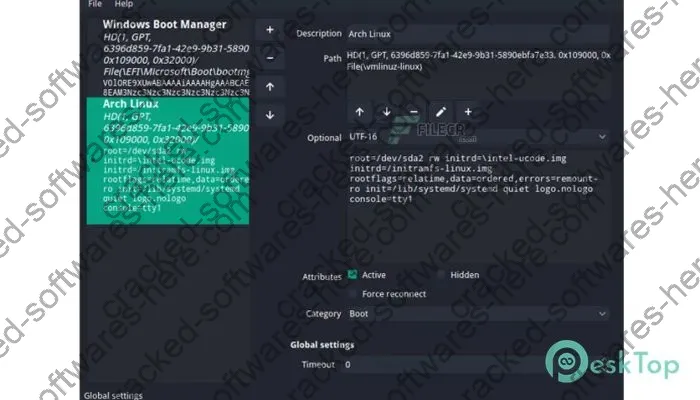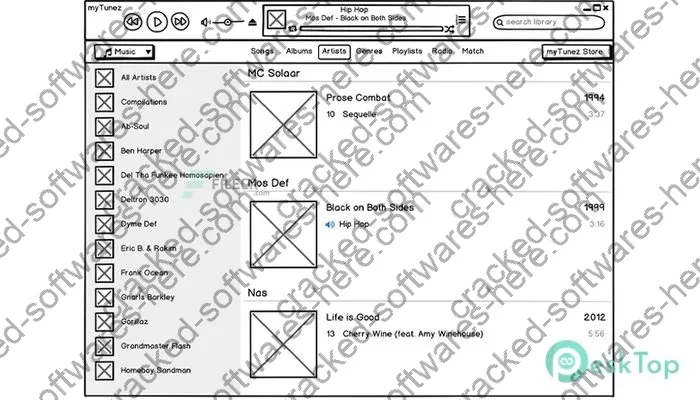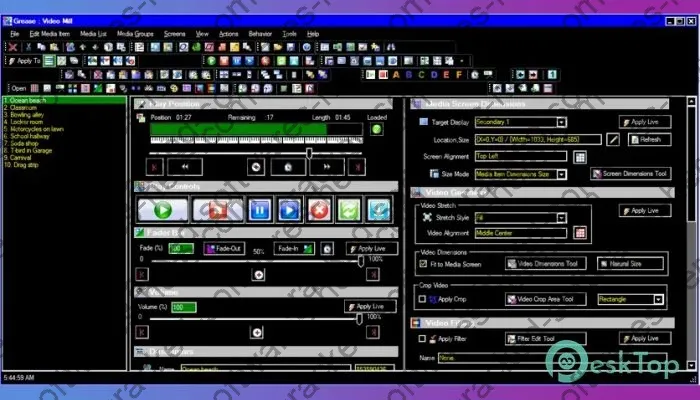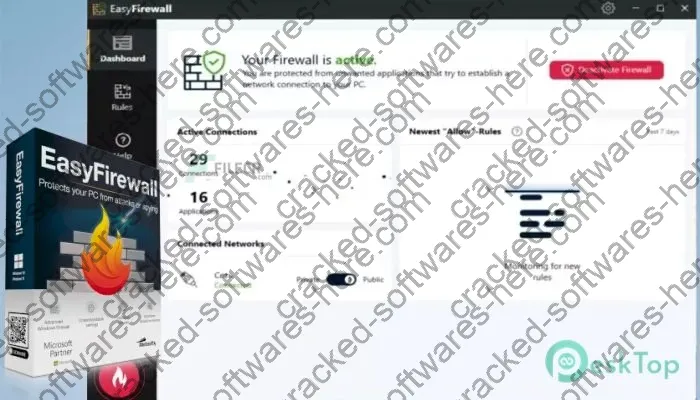The Extensible Firmware Interface (EFI) Boot Editor is a powerful tool that allows you to control and customize the boot process on modern computers. Whether you need to change the boot order, enable or disable specific boot options, or troubleshoot boot-related issues, the EFI Boot Editor offers a range of useful features. In this guide, we’ll dive deep into the world of the EFI Boot Editor Serial key, exploring its capabilities and providing you with the knowledge to master this essential tool.
Accessing the EFI Boot Editor
The method for accessing the EFI Boot Editor can vary depending on your system and operating system. On most modern Windows computers, you can access the EFI Boot Editor by pressing a specific key (often F9, F10, F11, or F12) during the initial boot process. This key combination is usually displayed on the screen during startup.
On Linux and Mac systems, the process is slightly different. For Linux, you typically need to access the BIOS/UEFI setup utility and navigate to the boot menu or boot order section. On Mac computers, you can access the boot menu by holding down the Option (Alt) key during startup.
Once you’ve accessed the EFI Boot Editor, you’ll be presented with a interface that displays the available boot options and allows you to make changes.
Understanding EFI Boot Options
The EFI Boot Editor Free download displays a list of boot options, each representing a different device or operating system that you can boot from. These options are typically presented with descriptive names, such as “Windows Boot Manager,” “Ubuntu,” or “USB Drive.”
It’s important to understand the difference between UEFI boot and legacy BIOS boot modes. UEFI is the modern replacement for the traditional BIOS and offers several advantages, including faster boot times, support for larger hard drives, and improved security features.
In the EFI Boot Editor, you’ll often see boot options represented by device paths or file paths. These paths specify the exact location of the boot loader or operating system files on your storage devices. Understanding these paths can be helpful when troubleshooting or manually configuring boot options.
Changing the Boot Order with the EFI Boot Editor
One of the primary functions of the EFI Boot Editor is to change the boot order, which determines the sequence in which your computer attempts to boot from different devices or operating systems.
To change the boot order, follow these steps:
- Access the EFI Boot Editor using the appropriate method for your system.
- Locate the boot option you want to move to the top of the boot order.
- Use the provided keys or menu options to change the boot order. This can involve moving the selected boot option up or down in the list.
- Save your changes and exit the EFI Boot Editor.
It’s important to note that you can either set a one-time boot order or make a permanent change to the default boot order. A one-time boot order change will only apply for the next boot, after which the system will revert to the default boot order.
Enabling/Disabling Boot Options
In some cases, you may want to disable certain boot options to prevent unauthorized access or simplify the boot process. The EFI Boot Editor allows you to enable or disable individual boot options as needed.
To disable a boot option, follow these steps:
- Access the EFI Boot Editor.
- Locate the boot option you want to disable.
- Use the provided keys or menu options to disable or hide the selected boot option.
- Save your changes and exit the EFI Boot Editor.
If you need to re-enable a disabled boot option in the future, you can follow a similar process and choose to enable or unhide the desired option.
See also:
Using the EFI Boot Editor for Troubleshooting
The EFI Boot Editor Download free can be a valuable tool for troubleshooting various boot-related issues. Here are some common troubleshooting scenarios where the EFI Boot Editor can be handy:
-
Running System Diagnostics: Many EFI Boot Editors include options for running system diagnostics or hardware tests. These can help identify and resolve issues with hardware components, such as RAM, storage devices, or other system components.
-
Accessing a Bootable Recovery/Installation USB: If you need to boot from a bootable USB drive to perform system recovery or a fresh installation, you can use the EFI Boot Editor to select the USB drive as the boot device temporarily.
-
Fixing Issues with RAID, Hard Drives, or Other Storage Devices: If you encounter problems with your RAID configuration or hard drives, the EFI Boot Editor can provide options for accessing and configuring these storage devices during the boot process.
Advanced EFI Boot Editor Tips
For more advanced users or system administrators, the EFI Boot Editor offers additional features and capabilities:
-
Adding Custom Boot Entries: You can manually add custom boot entries by specifying the file path or device path of the boot loader or operating system files.
-
NVRAM Entries and Custom Boot Settings: The EFI Boot Editor allows you to access and modify NVRAM (Non-Volatile Random Access Memory) entries, which can be used to configure advanced boot settings or enable specific features.
-
Generating BootNext/OsIndicators Values: In some cases, you may need to generate or modify BootNext or OsIndicators values to control the boot process or boot order on a more granular level.
-
Third-Party Boot Managers: If the built-in EFI Boot Editor doesn’t provide the level of control or features you need, you can consider using third-party boot managers like rEFInd or systemd-boot for more advanced boot management capabilities.
EFI Boot vs Legacy BIOS Boot
While the EFI Boot Editor is designed for UEFI-based systems, it’s important to understand the differences between EFI boot and legacy BIOS boot modes:
-
Legacy BIOS Boot: This is the traditional boot process used on older systems. It has limitations, such as a maximum addressable storage size of 2.2 TB and a lack of support for advanced features like Secure Boot.
-
EFI Boot (UEFI): The Unified Extensible Firmware Interface (UEFI) is the modern replacement for the legacy BIOS. It offers faster boot times, support for larger storage devices, improved security features, and a more user-friendly interface (like the EFI Boot Editor).
When configuring a new system or setting up a dual-boot environment, you’ll need to choose between EFI boot and legacy BIOS boot modes. The choice will depend on factors such as your hardware’s capabilities, operating system support, and specific requirements.
Common Issues with the EFI Boot Editor
While the EFI Boot Editor Serial key is generally reliable, you may encounter some common issues:
-
Boot Options Not Showing Up: If a boot option is not appearing in the EFI Boot Editor, it could be due to a misconfiguration, a missing or corrupt boot loader, or a hardware issue.
-
Can’t Change Boot Order: In some cases, you may not be able to change the boot order due to security settings or system policies. You may need to access additional settings or temporarily disable certain features to make changes.
-
Boot Override vs Actual Boot Order Change: It’s important to understand the difference between a one-time boot override (temporarily booting from a different device) and making a permanent change to the default boot order.
If you encounter any issues or have specific questions, it’s always a good idea to consult the documentation for your system or seek assistance from a qualified technician or support resource.
In conclusion, the EFI Boot Editor is a powerful tool that empowers you to take control of the boot process on modern computers. By following the guidelines and tips outlined in this guide, you’ll be well-equipped to navigate the EFI Boot Editor, change boot order, enable or disable boot options, troubleshoot issues, and leverage advanced features when needed.





The loading times is a lot improved compared to the original.
The speed is so much enhanced compared to the original.
It’s now far more intuitive to finish projects and manage information.
I would definitely suggest this software to anybody looking for a powerful platform.
The performance is so much better compared to older versions.
It’s now much more user-friendly to complete projects and track information.
The speed is a lot improved compared to the original.
I absolutely enjoy the upgraded workflow.
The latest functionalities in release the latest are really helpful.
I would highly suggest this tool to anyone wanting a powerful platform.
The new functionalities in version the latest are so cool.
This application is really fantastic.
The speed is so much improved compared to older versions.
I would strongly endorse this program to anybody looking for a powerful product.
I would definitely suggest this software to anybody looking for a top-tier platform.
This application is really awesome.
The responsiveness is so much faster compared to older versions.
I love the enhanced dashboard.
It’s now much more intuitive to complete jobs and manage information.
The loading times is so much better compared to the original.
It’s now a lot easier to do projects and track content.
The application is really great.
It’s now a lot simpler to get done tasks and track information.
The latest enhancements in release the newest are so awesome.
The responsiveness is significantly better compared to the previous update.
The new enhancements in release the newest are really helpful.
I would strongly suggest this software to anybody needing a robust solution.
This program is truly great.
The platform is definitely impressive.
I would definitely suggest this application to anybody wanting a robust product.
The recent enhancements in release the latest are extremely useful.
I would strongly endorse this application to anybody looking for a top-tier solution.
I would strongly suggest this tool to professionals looking for a high-quality platform.
I would absolutely recommend this program to professionals needing a top-tier solution.
I love the upgraded UI design.
The latest features in update the latest are incredibly great.
I appreciate the enhanced dashboard.
The loading times is so much enhanced compared to older versions.
This software is definitely fantastic.
This platform is really fantastic.
The loading times is significantly better compared to the original.
The responsiveness is significantly faster compared to older versions.
The responsiveness is a lot better compared to the original.
The latest updates in release the newest are extremely cool.
I would highly endorse this application to professionals needing a powerful product.
The latest enhancements in update the newest are really awesome.
The program is definitely amazing.
I would highly endorse this application to anyone needing a robust product.
It’s now far more user-friendly to get done work and organize content.
The loading times is a lot improved compared to the previous update.
This software is definitely great.
The tool is really fantastic.
The recent capabilities in release the newest are really helpful.
I really like the upgraded UI design.
The new updates in update the newest are really awesome.
The speed is a lot better compared to the original.
The platform is really fantastic.
This application is truly impressive.
The new features in version the newest are so useful.
The tool is really amazing.
I would strongly suggest this tool to professionals looking for a high-quality platform.
It’s now much easier to complete projects and manage data.
The performance is a lot enhanced compared to the original.
I would definitely recommend this tool to professionals wanting a powerful product.
The responsiveness is significantly improved compared to older versions.
I would highly recommend this program to anyone needing a robust platform.
This software is absolutely great.
This software is absolutely amazing.
It’s now a lot easier to get done work and manage data.
The performance is so much improved compared to the previous update.
The loading times is significantly improved compared to the original.
I appreciate the upgraded interface.
It’s now much simpler to do tasks and track content.
It’s now a lot more user-friendly to finish jobs and track content.
I would absolutely recommend this tool to anybody needing a top-tier solution.
It’s now a lot more intuitive to do work and track data.
The latest features in version the newest are so helpful.
I really like the new UI design.
I would strongly suggest this application to anybody wanting a high-quality product.
It’s now a lot more intuitive to get done work and track data.
It’s now a lot more user-friendly to do jobs and organize data.
The responsiveness is significantly enhanced compared to older versions.
I would strongly suggest this application to professionals looking for a high-quality platform.
This platform is really awesome.
This platform is really great.
I absolutely enjoy the upgraded dashboard.
It’s now a lot more user-friendly to finish tasks and organize content.
I would definitely recommend this software to anybody looking for a top-tier solution.
I would highly suggest this program to professionals wanting a powerful platform.
I really like the improved layout.
It’s now a lot easier to do work and manage content.
The software is really impressive.
I love the enhanced dashboard.
The loading times is so much enhanced compared to the previous update.
I would strongly recommend this program to anybody needing a high-quality platform.
The latest functionalities in version the latest are extremely cool.
I would absolutely recommend this program to professionals looking for a top-tier product.
I really like the new layout.
The application is really amazing.
The latest enhancements in release the newest are incredibly helpful.
I would definitely suggest this program to anybody looking for a top-tier product.
It’s now far simpler to do jobs and organize data.
The speed is a lot faster compared to the original.
The platform is absolutely fantastic.